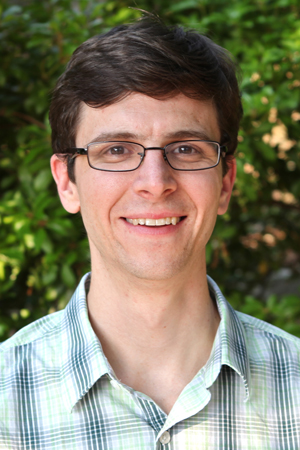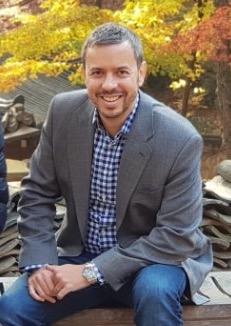News
Making Strides in Mapping the Human Cell Atlas
Columbia investigators win Chan Zuckerberg Initiative grants to accelerate development of cellular roadmap of the human body.
In two groundbreaking research projects contributing to the Human Cell Atlas, Columbia University scientists are tasked with mapping complete cells in the immune system and the human spine. The global effort is aiming to identify and define every cell type of the human body and create a collection of maps for navigating the cellular basis of human health and disease.

Peter Sims, PhD, assistant professor of systems biology
The Columbia teams, which include co-principal investigators from the Department of Systems Biology Drs. Peter Sims and Raul Rabadan , are among the 38 collaborative science teams launching the Chan Zuckerberg Initiative’s (CZI) Seed Networks for the Human Cell Atlas project announced today. The three-year projects, receiving a total of $68 million in award funding by Seed Networks, are collaborative groups that are bringing together expertise in science, computational biology, software engineering, and medicine to support the ongoing progress of the Human Cell Atlas .
Investigating the Immune System + Aging
Dr. Sims, part of an international team including close collaborator Dr. Donna Farber of the Department of Surgery , is combining single-cell sequencing technologies, data analysis, and immunology expertise to better understand how the immune system ages and gain new insights into how human diseases occur.
“Understanding how the immune system ages might provide us with a unique window into how different diseases occur and how they transpire in different stages of our life,” says Dr. Sims, assistant professor of systems biology and director of the Single-Cell Analysis Core at Columbia. “Single-cell analysis will be very important in this project not only because it is going to allow us to identify and track many different populations of cells simultaneously it is also going to let us monitor how they change upon stimulation.”
Unlike bulk DNA/RNA sequencing whereby genomic data obtained covers a large group of cells, single-cell RNA sequencing enables scientists to capture molecular and genomic data for each individual cell contained within the tens of thousands that can make up a biological sample. In cancer biology, for instance, this technique is making it possible to discover new cell types within a tumor and its surrounding environment.
A key challenge of studying the human immune system has been access to healthy organs for research. At Columbia, Dr. Farber has established a pioneering resource for acquiring healthy human tissues from organ donors and developed the expertise to isolate many different immune cell types with sufficient quality for sophisticated molecular analysis.
“Our ongoing work in investigating human immune cells in tissues could not be possible without the research protocol we’ve established with organ donor procurement organization, LiveOnNY,” says Dr. Farber, Humphreys Professor of Surgical Sciences and professor of microbiology and immunology at Columbia. “With the Sims lab, we will transcriptionally profile the entire complement of immune cells isolated from multiple tissue sites on the single cell level, from individual organ donors over age and genetic diversity. The results from this study will reveal new insights into Human immunity to better define the origin and mechanisms for disease.”
Drs. Sims and Farber are working with multiple PIs on their new Seed Networks project, which is being co-led by Dr. Sarah Teichmann from the Sanger Institute-UK and Dr. Nir Yosef at UC Berkeley.
Building a Cellular Map for the Spine

Raul Rabadan, PhD, professor of systems biology
Focusing on the human spine, Dr. Rabadan, professor of systems biology and founding director of Columbia’s Program for Mathematical Genomics, is a co-PI of the Seed Networks project exploring sophisticated experimental and computational techniques to create an open source atlas of the human spinal cord. Working in a team with co-PIs Abbas Rizvi, PhD ( Zuckerman Institute ); Tom Maniatis, PhD (Zuckerman Institute, Biochemistry and Molecular Biophysics); and Liam Paninski, PhD (Zuckerman Institute, Statistics and Neuroscience), this reference guide will serve as a platform to help others develop treatments and technologies for neurodegenerative disease and spinal cord injury.
Dr. Rabadan is working closely with Dr. Paninski on the computational front. The Rabadan lab is generating innovative tools to denoise, align, analyze, and visualize multimodal single cell datasets. Dr. Paninski’s group is developing highly novel and statistically robust methods to harmonize single cell observations and analyze in situ sequencing data.
In 2017 , CZI, created by Facebook CEO Mark Zuckerberg and wife, Priscilla Chan, awarded Drs. Sims and Rabadan pilot grants in its inaugural round of funding. Dr. Sims gained support for his research in SCOPE-Seq, a novel, economical method for conducting RNA sequencing coupled with live imaging of the same individual cell on a large scale, and Dr. Rabadan and his existing CZI team received a pilot grant to develop their atlas of the genetic activity of all the cells in the human spinal cord.
Additionally, Drs. Sims and Rabadan have been intensively collaborating in the last few years as part of an NCI center grant to dissect the evolution and dynamics of tumors. “Our network of collaborations,” notes Dr. Rabadan, “truly underscores the interdisciplinary collaborative environment at Columbia.”
The Seed Networks grantees represent 20 countries and more than 200 labs, with 45 percent of projects featuring international collaborations. The projects will generate new tools, open source analysis methods, and significant contributions of diverse data to the Human Cell Atlas Data Coordination Platform, a resource for data sharing across researchers and research institutes.
-Melanie A. Farmer